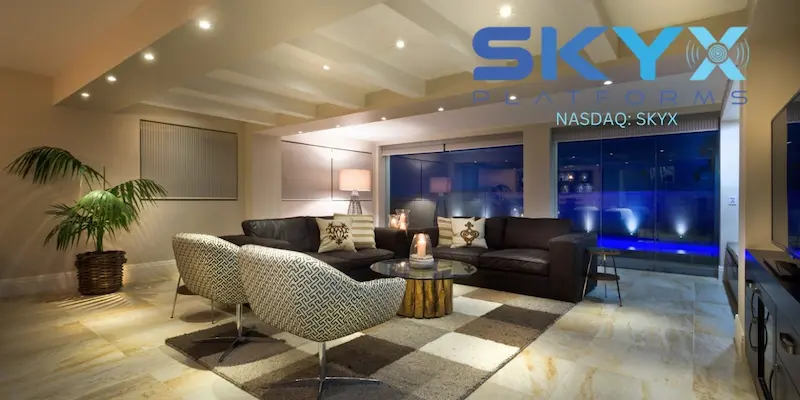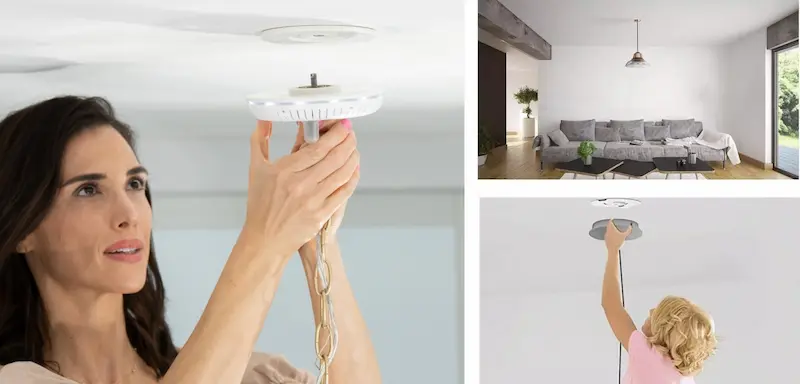Table of Contents
Workshops present complex environments with diverse tasks, machinery, and potential hazards. Implementing smart lighting in these spaces demands careful consideration of safety aspects. From dangers with electricity to putting lights in the right spots, every small thing is important to make a safe and bright place to work for many types of jobs in workshops.
At these places, selecting the right smart lighting system is crucial. Consider factors like durability, energy efficiency, and compatibility with your workshop’s layout. Look for systems designed to withstand dust, vibrations, and other challenges common in industrial settings. Choose options that offer flexibility in controlling light intensity and distribution.
But knowing only a little about putting in smart lights is not enough. To make sure it’s safe and works well, let’s discuss the important tips for safely setting up smart lights in workshops.
Understand Your Workshop’s Needs
Before you start putting in lights, it’s very important to figure out what kind of lighting your workshop really needs:
- Look at the kinds of work done in each part of your workshop
- Check how much sunlight comes in naturally
- Find any dangerous spots or areas that need extra care
By knowing these things, you can pick the best smart lights for your workshop.
Choose the Right Smart Lighting System
When selecting a smart lighting system for your workshop, consider the following:
- Compatibility with your existing electrical setup
- Durability to withstand workshop conditions (dust, vibrations, etc.)
- Energy efficiency ratings
- Ease of use and control options
Pick lighting systems made just for workshops or factories. This helps make sure they last long and stay safe.
Plan Your Layout Carefully
A good plan for where to put lights is important for staying safe and getting work done:
- Make sure light is spread evenly across all work areas
- Try not to make dark spots or bright flashes on work tables
- Think about special lights for jobs that need close-up work
- Plan for backup lights in case the power goes out
Prioritize Electrical Safety
Staying safe from electricity should be the most important thing when putting in smart lights:
- Turn off the main power before you start any work
- Wear the right safety gear (PPE)
- Make sure all wires are covered and protected properly
- Put in ground fault circuit interrupters (GFCIs) where you need them
It’s always a good idea to look at Workshop lighting safety guidelines for full information on how to stay safe from electricity in workshops.
Consider Professional Installation
Even though some people who like to do things themselves might want to put in smart lights on their own, it’s often safer and better to get a professional to do it:
- Certified electricians know the local rules about electricity
- Professionals can make sure wires are connected the right way
- They can help you choose the best spots for lights to be safe and work well
If you still want to do it yourself, make sure you know a lot about electrical work and local rules.
Implement Proper Mounting and Fixturing
Making sure lights are attached firmly is very important in a workshop:
- Use strong holders that can support the weight of each light
- Make sure lights are sealed well to keep out dust and water
- Look for lights that don’t shake a lot for places near machines
- Check all connections and attachments twice before turning on the power
Integrate Smart Controls Safely
Smart lights often have fancy ways to control them:
- Put control panels where they’re easy to reach and safe to use
- Make sure wireless controls don’t mess with other workshop tools
- Add protection against power spikes for delicate smart parts
- Think about adding regular switches in case the smart system stops working
Test and Maintain Regularly

After putting in the lights, checking and taking care of them often is important to keep things safe:
- Test all the different light settings right after installation
- Plan to look at wires and lights regularly
- Make sure the computer parts of the lights have the newest updates
- Fix any problems quickly to avoid dangers
Educate Workshop Users
Make sure everyone who uses the workshop knows how to use the new smart lights safely:
- Teach people how to control the lights and what to do in an emergency
- Write easy-to-follow steps for changing light settings
- Stress how important it is to tell someone if anything goes wrong with the lights
Plan for Future Expansion
As your workshop gets bigger or different, you might need to change your lights:
- Pick a smart lighting system that can grow with you
- Keep some space in your electrical box for adding more lights later
- Write down how your lights are set up now, so it’s easy to make changes later
Conclusion
Putting in smart lights in your workshop can make it a much better place to work, making it safer and helping you get more done. If you follow these tips and always think about safety first, you can make your workshop bright, useful, and safe. Remember, it’s more important to be safe than to make things easy. Don’t be afraid to ask for help from experts when you need it.
Want to explore something different? Understanding Personal Injury Law: Your Rights and Responsibilities

